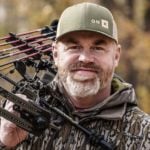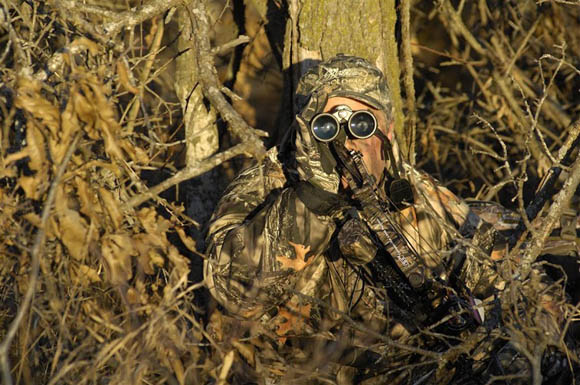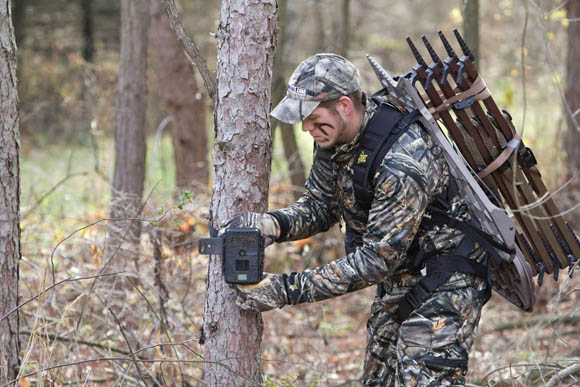LAST UPDATED: May 1st, 2015
Ask any hunter the best time to kill a whitetail, and you’re likely to get a long list of different answers. While some hunters wait for cooler weather, others strike on the opener while deer may still be lingering on their late summer feeding patterns. There are those that hunt only the rut, and some that burn themselves out before November ever arrives. But what about the morning hunt versus afternoon hunt debate that has raged across hunting camps everywhere? Some swear afternoon hunts are the only way to go, while others have scored on giants in the morning. This month we’ll take a look at what makes each opportunity unique and share some insight on how you can optimize your time in the stand.
Does it really matter if you’re hunting in the morning or the evening? Maybe. However, the most important thing is using the right tactic at the right time.
Most hunters would agree that most anytime is a good time to be in the woods chasin’ whitetail deer. But there are those prime-time moments that deer hunters should key in on to find consistent success. Some hunters have no choice on when they hunt. They simply hunt when their schedule allows them to be in the woods. However, there is a method behind the madness of others that choose to hunt one time over the other.
My buddy, Troy Ruiz, of the HeadHunters TV show has hunted deer from his home turf in the southeast to the open country in the northwest. He’s spent countless hours high above the ground in a treestand, both in the morning and afternoon. What does he prefer? “I have been asked this question many times,” says Ruiz. “I love hunting in the morning. I like the new beginnings and watching the world wake up to another day. Although for the whitetail, he has been up most of the night feeding. So my plan is to catch him coming back to bed with a full gut, and the only thing on his mind is sleep. I like to back off and do my best to be between the bedding area and feeding area. I try not to get too close to either so as not to spook any deer that may have decided to head to bed a little early. Getting in early and staying late has been my key to success. You can’t kill them at the camp or in the truck, so if you feel good about your location, hang tough and be patient. Do your homework and determine where they are spending the majority of their time, and do your best to be there before they get there.”
Before deciding to hunt mornings or afternoons, you should first decide what approach you’re going to take for the hunt. In other words, will you be hunting over a bedding area, feeding area, or perhaps a transition route in-between?
Deer will be feeding in AG fields throughout the night and pre-dawn hours. You simply can’t hunt these field edges in the mornings without getting busted. Morning hunters will want to key in on the areas deer are headed next…like bedding areas. This will often be the thickest, nastiest place on the farm you hunt. Find the downwind edge of these bedding areas, and you’ll be in a great spot for success.
Transition Areas
Keying in on deer’s commute to and from feeding areas is a must for early season success, regardless of whether you’re hunting morning or afternoon hunts. Hunters often fall for the myth they can simply hang a stand over a food plot or corn field and be good to go. However, other factors certainly come in to play. Ruiz reminds hunters that if a deer has to travel a long distance from bed to feed they may stage up in an area that is filled with browse like honey-suckle, green briar, sumac etc. Once the shadows draw longer and longer they will move to open hardwood bottoms and agriculture fields. So again, doing your homework is a must. Trail cameras will help you answer the tough scouting questions like no other gear possibly can.
Deciding when and where to hunt can be made easier with the use of a quality trail camera.
My good friend, and bowhunting brother, Rusty Farmer, agrees that you must set up where deer want to be next. Rusty has killed a lot of deer over the years by staying a few steps ahead of the deer he pursues. “When it is still relatively hot, I like afternoon hunting better,” says Farmer. “Early season deer tend to feed all night and head to bed pretty quick in the mornings. After being laid up all day, the deer will get back on their feet and be pretty active as they feed the last hour of daylight in the afternoon. Afternoons seem to allow me a better opportunity at staying ahead of deer movement, without spooking deer. Travel trails leading to feed and entrance trails into food plots and AG-fields are where my stand will be hung in the afternoons.” The downside of hunting early season afternoons is dealing with the heat. You can’t walk slow enough to prevent sweating like crazy. Both Troy and Rusty rely on scent killer sprays to use before and during the hunt to help control odor as much as possible.
Early season, afternoon hunts mean HEAT. Therefore, scent-control becomes a must if you want to succeed during that time frame.
The bottom line is morning and afternoon hunts can both be very productive. Extra caution and care must go into your approach in the mornings. You simply can’t see what’s around you. For this reason, you will spook more deer. But do your homework, know where your deer are and where they are headed, and you will begin to see the odds for success tipped more and more in your favor this season. .
Tips for Hunting Mornings and Afternoons
Mornings
- Get in early, play the wind, settle down and be patient.
- Try not to be too close to their bedding area or their feeding area. You don’t want to let them know of your presence while entering or exiting your set up
- Wind thermals will be to your advantage in the mornings as they begin to rise.
- Don’t let the lull of mid-morning fool you. Deer are browsers and will often mill around for hours before making it to their destination.
Evenings
- Get in early and stay a little late. At least till dark thirty.
- Wear light clothing in early season while walking in to your stand to help in the perspiration process and keep human odor to a minimum.
- Have an extra shirt or light jacket and carry that in your pack in a scent free bag and change once you get to your set up.
- Spray down with scent killer before your hunt, halfway to your stand, and when getting to your stand. Do all you can to not let the deer know of your presence?
Brodie Swisher is a world champion game caller, outdoor writer, and seminar speaker. Check out his website www.thrutheseason.com

 By
By 





